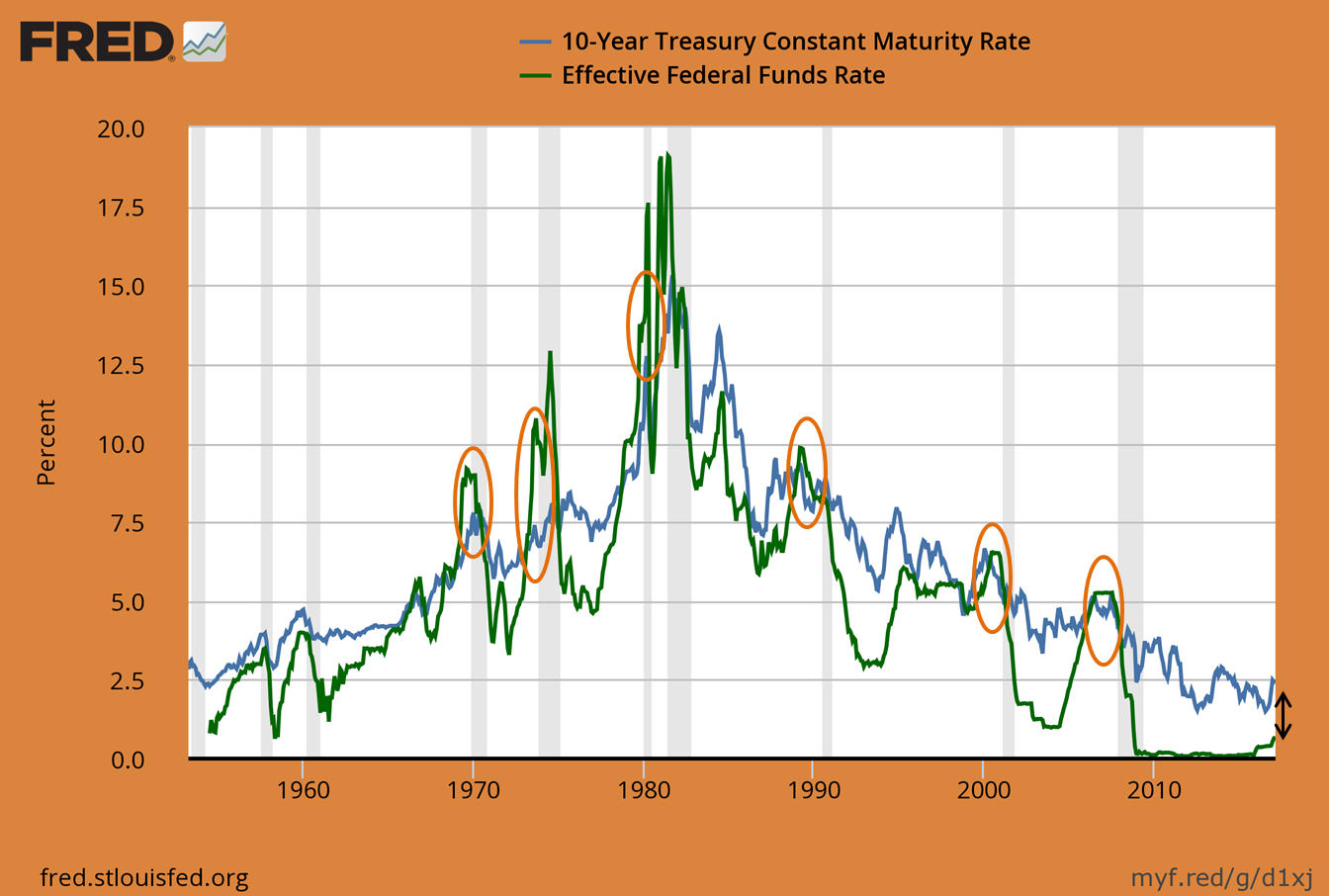The Fed raised interest rates at their meeting this week, just the 3rd time since the recession ended nearly 8 years ago. Over the past two weeks market participants have worried the Fed would push rates up too far and too fast. Stocks rallied during Fed Chair’s press conference after she said the economic “data has not noticeably increased.” This was read as a sign the Fed would continue to move at a snail’s pace in their rate hikes.
Looking at the Fed’s track record, the fear they would go too far and too fast is well justified. The Chart of the Week this week looks at short & long-term interest rates throughout the economic cycle. Keep in mind the Fed only controls SHORT-TERM interest rates. The “free” market sets long-term interest rates. As you can see in all cases the Fed pushed short-term interest rates (the green line) up significantly just before the economy went into a recession (the grey shading).

In addition, note that in all cases the Fed pushed short-term rates above long-term rates (the blue line) ahead of the recession. This inversion of the yield curve is one of the most successful predictors of recession. The current level of interest rates shows there is still plenty of room before the Fed pushes us into the next recession. While things can change rather quickly, my economic indicators still show signs of strength beneath the surface. I’m honestly not sure why so many people focus on the opinions of the 10 members of the Federal Reserve when they have been the primary cause of all past recessions.
As for me, I’ll continue to focus on the DATA.




